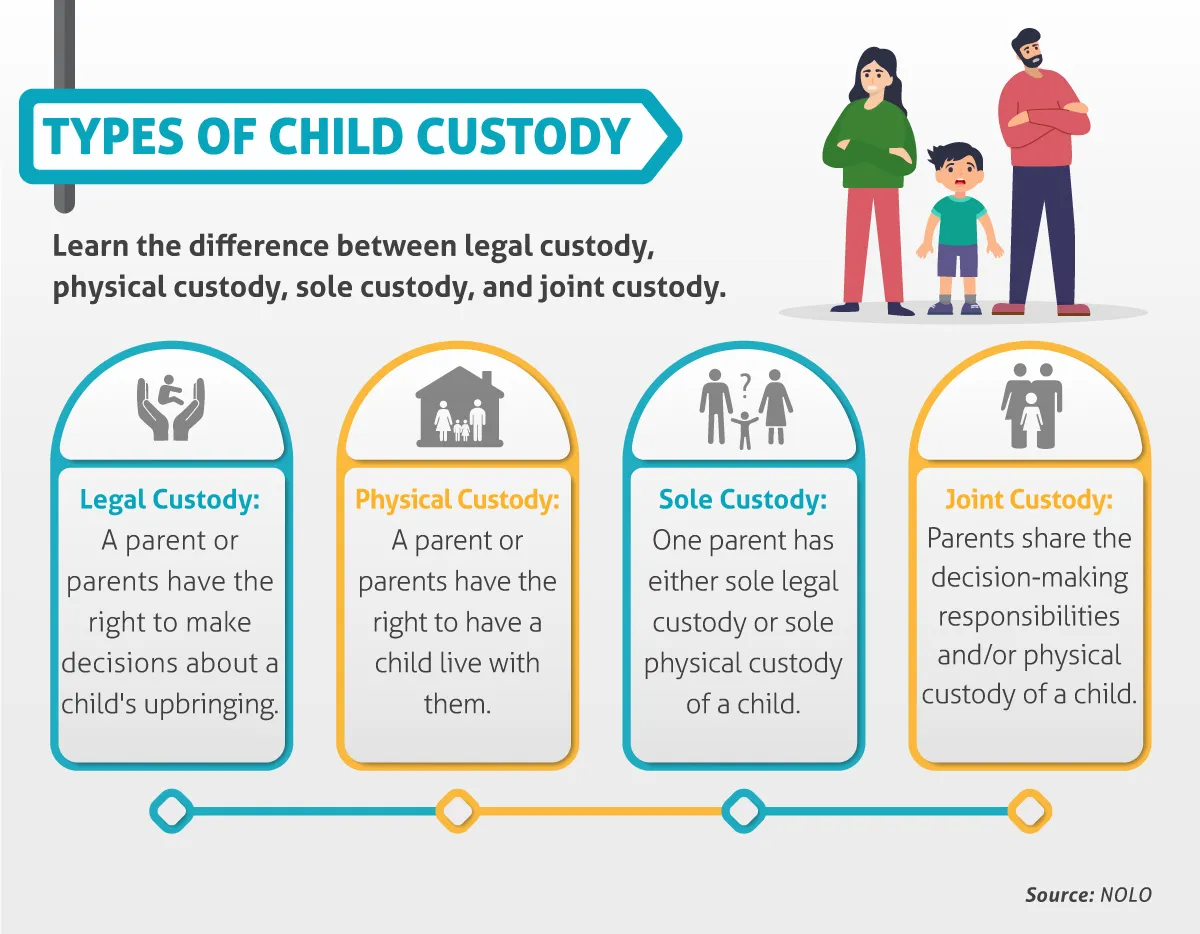Step-by-Step Guide to Getting Full Custody of Your Child
Introduction
Table of Contents:
- Understanding Full Custody
- Different Types of Custody Arrangements
- Factors Courts Consider in Custody Decisions
- Step-by-Step Process to Pursue Full Custody
- Five Common Questions About Getting Full Custody
- Building a Strong Custody Case
- Courtroom Preparation and Best Practices
- Protecting Your Child’s Best Interests
- Benefits and Challenges of Full Custody
- Next Steps and Final Thoughts
- Strong Call to Action
1. Understanding Full Custody
Legal Custody vs. Physical Custody
- Legal Custody: The authority to make crucial decisions about the child’s welfare, education, healthcare, and religious upbringing.
- Physical Custody: Refers to where the child will live and who will be responsible for their day-to-day care.

What Does “Full Custody” Mean?
- Sole Legal Custody: The parent awarded sole legal custody is responsible for making all significant decisions for the child.
- Sole Physical Custody: The child lives primarily with one parent, while the other may have visitation rights or, in some cases, no visitation rights, depending on the specifics of the order and the best interests of the child.
2. Different Types of Custody Arrangements
1. Joint Legal Custody
2. Joint Physical Custody
3. Sole Legal Custody
4. Sole Physical Custody
5. Split Custody
This is less common but may occur if there are multiple children and each parent has primary custody of one or more children.
3. Factors Courts Consider in Custody Decisions
The Child’s Preference
Parent’s Ability to Provide Stability

Parent-Child Relationship
Mental and Physical Health
Evidence of Abuse or Neglect
Co-Parenting Willingness
Courts tend to favor parents willing to foster a healthy, ongoing relationship between the child and the other parent (unless there are safety concerns).
4. Step-by-Step Process to Pursue Full Custody
Step 1: Determine Your Reason for Seeking Full Custody
- Ask yourself why you believe full custody is necessary. Is it because of the potential danger posed by the other parent? Is it due to instability in the other parent’s living situation?
- Having a well-defined reason will help shape your case and clarify your objectives.
Step 2: Consult with a Family Law Attorney
- An experienced family law attorney can provide personalized legal advice based on your circumstances and jurisdiction.
- Your attorney will help you understand your state’s custody laws, file the required paperwork, and represent you in court.

Step 3: File the Appropriate Court Documents
- Depending on your state, you may need to file a “Petition for Custody” or a similar legal document.
- Keep track of deadlines and ensure you appropriately serve the other parent with the paperwork, adhering to local laws and procedural requirements.
Step 4: Gather Relevant Evidence
- Compile documents and records that showcase your ability to provide a stable, nurturing environment. This may include:
- School records showing your involvement in the child’s education
- Medical records showing consistent healthcare appointments
- Photos and communication logs
- Witness statements from teachers, neighbors, or other family members
- If you believe the other parent is unfit, gather proof of any neglect, abuse, or other concerning behavior.
Step 5: Prepare for Mediation (If Required)
- Some states require mediation before a formal hearing. Mediation is when a neutral third party helps parents negotiate a custody arrangement.
- Even if you seek full custody, attending mediation in good faith is crucial. Courts often favor parents who demonstrate cooperation and a willingness to find a child-centered solution.
Step 6: Attend All Court Hearings
- Once you’ve filed for custody, you’ll have to attend a series of hearings, including preliminary conferences and possibly a trial.
- Dress professionally, be punctual, and follow your lawyer’s advice regarding courtroom decorum.
Step 7: Present a Strong Case
- During custody hearings, you’ll need to provide evidence and possibly call witnesses to testify on your behalf.
- Your lawyer will guide you on presenting your evidence effectively and responding to cross-examination.
Step 8: Follow All Court Orders
- Even if the outcome is not precisely what you hoped for, adhere to any temporary or final custody orders. Non-compliance can severely hurt your case if you plan to revisit or modify custody arrangements later.
5. Five Common Questions About Getting Full Custody

Question 1: Can a Child Decide Which Parent to Live With?
Question 2: Do I Need a Lawyer to Get Full Custody?
Question 3: How Does Domestic Violence Affect Custody Decisions?
Question 4: Can I Modify Custody Orders After They Are Established?
Question 5: What if the Other Parent Is Uncooperative?
6. Building a Strong Custody Case
Document Your Involvement
- Keep a journal of your daily interactions with your child.
- Save receipts for expenses, medical visits, and extracurricular activities to show your financial and emotional investment.
Maintain a Stable Environment
- If possible, maintain steady employment and consistent housing.
- Aim to live in a safe neighborhood with good schools and community support.

Show Positive Co-Parenting Efforts
- Even if you are pursuing full custody, demonstrate to the court that you support the child’s right to have a relationship with the other parent (unless there’s a legitimate safety concern).
- Clear communication and minimal conflict can go a long way in showcasing your ability to act in the child’s best interests.
Gather Character References
- Teachers, coaches, neighbors, and family members can serve as witnesses or provide written statements about your parenting skills and stability.
- Their testimonies can bolster your credibility and demonstrate a pattern of positive, responsible behavior.
Prepare for Potential Counter-Arguments
- Understand that the other parent may also gather evidence or provide testimony to show they are equally capable.
- Work with your attorney to anticipate challenges and prepare strong rebuttals.
7. Courtroom Preparation and Best Practices
Dress and Demeanor
- Dress in formal, conservative attire.
- Remain calm and respectful, even if the other parent becomes emotional or confrontational.
Organize Your Documents
- Have a dedicated folder or binder for all relevant paperwork, including court filings, medical records, school records, and communication logs.
- Label each section clearly so you can quickly reference documents during the hearing.
Follow Court Protocol
- Arrive on time or early. Lateness can reflect poorly on your responsibility and respect for the legal process.
- When addressing the judge, use appropriate language and avoid interrupting.
Speak Only When Appropriate
- Listen attentively and respond directly to the questions asked.
- If you are unsure how to answer, consult quietly with your attorney.
Keep Your Focus on the Child’s Best Interests
- Reiterate how awarding you full custody aligns with your child’s needs.
- Avoid personal attacks against the other parent; focus on factual information about parenting capabilities and the child’s well-being.
8. Protecting Your Child’s Best Interests

Maintaining a Sense of Normalcy
- Keep routines consistent, including bedtimes, study hours, and extracurricular activities.
- Provide emotional support by keeping open lines of communication, especially if the child feels stressed or conflicted about the process.
Encouraging Healthy Relationships
- If possible and safe, facilitate communication between the child and the other parent.
- Avoid speaking negatively about the other parent in front of the child. Courts often view such behavior as detrimental to the child’s emotional health.
Counseling or Therapy
- Consider family counseling or individual therapy for your child, especially if the custody battle is causing emotional distress.
- Professional guidance can help your child cope and ensure they have a neutral space to express feelings.
Establishing Clear Boundaries
- If the other parent is unstable or abusive, set clear guidelines for communication and visitation.
- Follow any protection orders or supervised visitation requirements strictly, keeping records of violations.
9. Benefits and Challenges of Full Custody
Benefits
- Consistency for the Child: A single household as the primary home can provide consistency, routine, and stability.
- Sole Decision-Making: If you have sole legal custody, you can make essential decisions without conflict.
- Reduced Conflict: Clear legal boundaries can minimize ongoing disputes with the other parent.
Challenges
- Financial Responsibility: The custodial parent often bears the bulk of economic costs, from everyday expenses to educational and medical fees.
- Emotional Toll: Being the primary caregiver can be emotionally exhausting, especially if you lack additional support.
- Limited Parental Breaks: You may struggle to carve out personal time or breaks from caregiving duties with full custody.
10. Next Steps and Final Thoughts
- Seek Legal Counsel: Consult an experienced family law attorney for tailored advice.
- Maintain Transparency: Be open and honest with your attorney, the court, and—most importantly—your child (in an age-appropriate manner).
- Gather Evidence Early: Document everything from finances to daily routines, and be prepared to present a coherent story in court.
- Prioritize Your Child’s Needs: Remember that the court’s primary objective is to ensure your child’s safety, stability, and well-being.
- Stay Adaptable: Custody laws and standards may evolve, and your child’s needs will change over time. Stay open to modifications if they serve your child better.

11. Strong Call to Action
Navigating a custody battle can be one of your most challenging and emotional experiences. Having a knowledgeable team by your side, offering strategic advice and compassionate support is essential. Tess House Law Firm specializes in child custody cases and is dedicated to fighting for an outcome that genuinely serves your child’s best interests.

